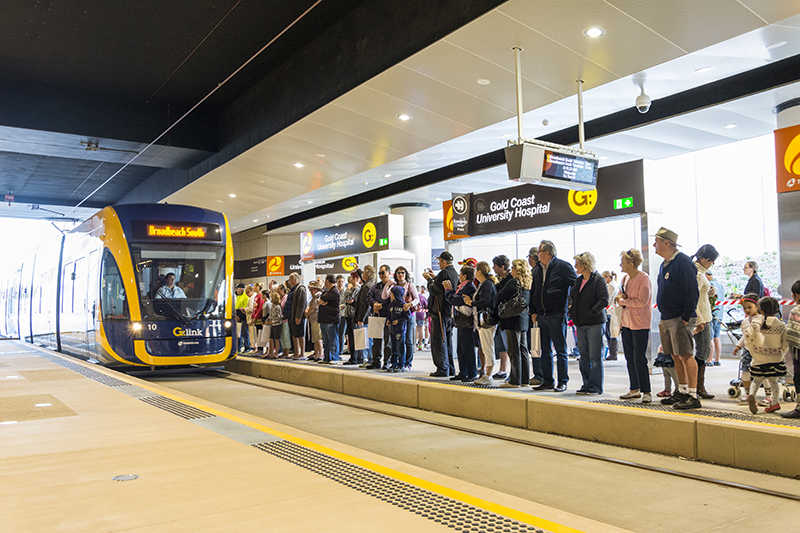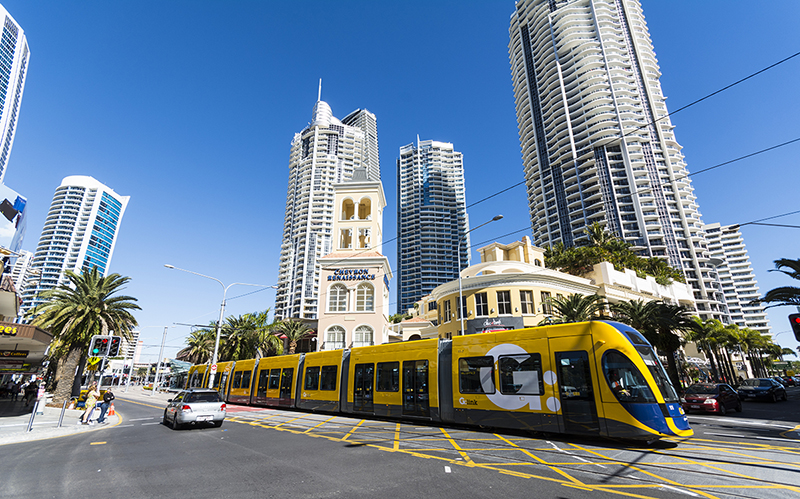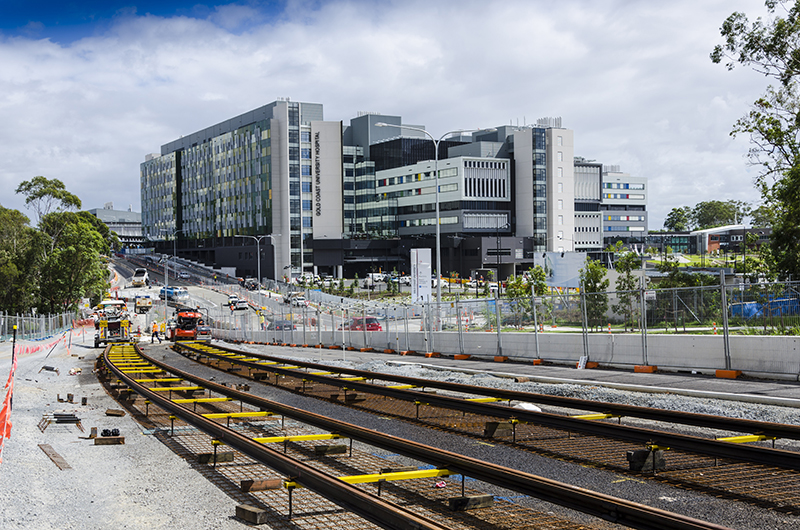This project by McConnell Dowell Constructors (Aust) Pty Ltd has achieved an 'Excellent' IS Rating.
Overview
The project relates to the development of a light rail system that passes through key activity centres of Southport, Surfers Paradise and Broadbeach. The 13-kilometre Stage One corridor and any future stages promise to significantly improve the liveability of the Gold Coast by improving accessibility, while reducing the effects of congestion that comes with a rapidly growing city. It is one of the most important pieces of transport infrastructure ever undertaken on the Gold Coast.
Details
- Rating Type Rail
- Rating Score 64.4
- Registered Date June 2012
- Practical Completion July 2014
- Jurisdiction Australia
- States QLD
- Suburb Gold Coast
- Assessor Anne Carleton
- Capital Value $437 Million
- Other Stakeholders Arup Australia, Cardno, McConnell Dowell Constructors (Aust) Pty Ltd, GoldLinQ Consortium, Bombardier Transportation, KDR
Rating Highlights
Management Systems
Good scores on most credits.
Particularly good examples of knowledge sharing (toolbox talks, discussion forums, series of you-tube web episodes for use within the Australian Schools curriculum, including sustainability)
Full scores for risk and opportunity management, inspection and auditing, management system accreditation
Procurement and Purchasing
Level 2 achieved for all credits
- Strong commitment to sustainable procurement
- Consideration of sustainability during the identification and evaluation of suppliers
Suppliers sustainability performance is monitoring and managed throughout delivery of their contract
Water
The following water saving opportunities were implemented:
- Water efficient devices in permanent and temporary facilities
- Xeriscape landscaping
- Collection of rainfall from depot roof
- Recycled water in the wash-plant
- Stormwater harvesting – i.e. rainwater tanks on crib huts
- Sourcing non-potable water for dust suppression and compaction activities
Materials
Level 3 achieved for Mat-1
- 55% improvement in embodied carbon based on a reference design
- 104,000 tCO2e reduced through embodied carbon reductions
A significant reduction in materials lifecycle was achieved through design development phase and modified construction practices. Examples include:
- Significant design changes
- Reuse of materials on-site
- Reduction in slab thickness for the track.
- The use of exchangeable switch blades and track curves, which limits the amount of excavation and replacement concrete required
- Relining pipes which are of sufficient capacity for future demands
- Use of direction drilling/pipe jacking and other less intrusive methods of installing pipes – more than 2.5km completed without need to large excavations.
Discharges to Air, Land & Water
Level 3 achieved for all credits
No major exceedances of water quality, noise, vibration or air quality monitoring goals.
Land
>75% of the land used for the project is previously disturbed.
The project footprint is primarily within an existing road corridor, and as such 87% of the project land has been assessed as previously disturbed.
Mapping confirmed that the total construction footprint was 647,353m2, of which 81,889m2 was classified s undisturbed.
Waste
Achieved very high diversion rates from landfill, including,
- all spoil from the project is either reused on site or is trucked offsite to a recycling site for reuse or reprocessing. Achieved a 100% recycling rate.
- The project achieved a recycling rate of 89.7% across the board for inert and non hazardous wastes.
Community Health, Well-being and Safety
The project set a stretch target of recruiting 82.5% of project personnel from the extended Gold Coast area (including Scenic Rim, Brisbane City, Redlands, Logan and Ipswich). The project also set a target of providing 188,000 hours of deemed training to green labour and upskilling of local workforce. This target included providing 50 traineeships, apprenticeships and or cadetships (see Hea-1be).
Regular surveys confirm that over 96% of project employees were recruited from within the extended Gold Coast Area, with over 80% living within the Gold Coast City Council area.
Innovation
QLD first initiative to install a new track switching system that makes the process easier and allows for reduced time, cost and distruption during maintenance on the track switches. Using this system, the switch blade can be replaced from the top of rail, therefore there is no need to dig up the embedded concrete around the track switch to replace wearing parts.



